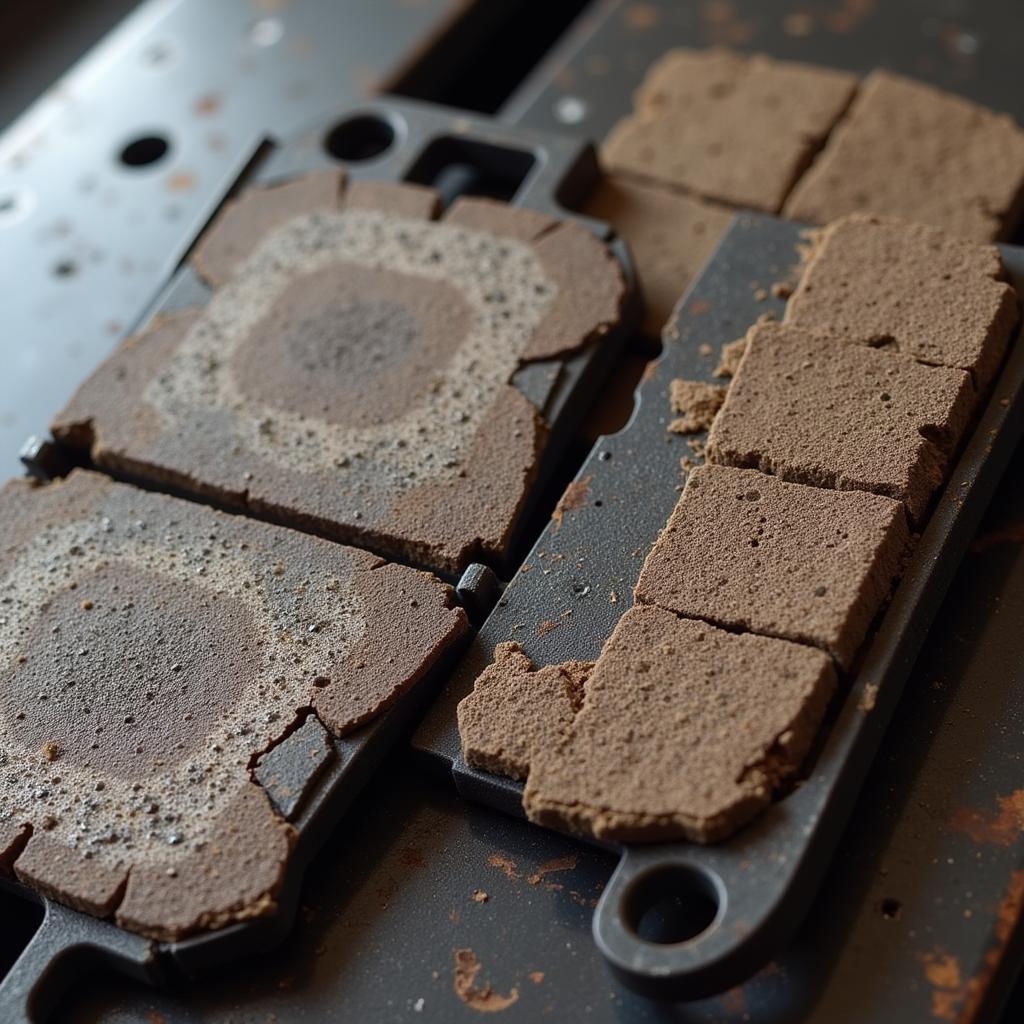The brake warning light on your dashboard is a crucial safety feature, and when it illuminates in your 2010 Hyundai Sonata, it’s essential not to ignore it. This light signals a potential issue with your vehicle’s braking system, demanding immediate attention. While it could be something as simple as a low brake fluid level, it could also indicate a more serious problem requiring professional diagnosis and repair.
This comprehensive guide will walk you through the common causes of a 2010 Hyundai Sonata brake warning light and provide potential solutions.
Understanding Your Hyundai Sonata’s Brake System
Your Hyundai Sonata utilizes a sophisticated hydraulic system to engage the brakes. When you press the brake pedal, it activates a piston that pressurizes brake fluid within the master cylinder. This pressure is then transmitted through brake lines to calipers at each wheel, forcing the brake pads against the rotors and slowing or stopping the vehicle. Any leaks, malfunctions, or worn components within this system can trigger the brake warning light.
Common Causes of a 2010 Hyundai Sonata Brake Warning Light
Several factors can cause the brake warning light to turn on in your 2010 Hyundai Sonata. Here are some of the most common culprits:
1. Low Brake Fluid Level
One of the most common reasons for an illuminated brake warning light is low brake fluid. Brake fluid is essential for transmitting the force from your foot on the brake pedal to the wheels, ensuring effective braking.
What to do:
- Check the brake fluid level: Open the hood and locate the brake fluid reservoir, usually a translucent plastic container with a “Min” and “Max” marking. Ensure the fluid level is between these marks.
- Add brake fluid (if necessary): If the level is low, carefully add the appropriate DOT 3 or DOT 4 brake fluid recommended for your Hyundai Sonata. Avoid overfilling.
- Inspect for leaks: If the fluid level is significantly low or drops rapidly after adding more, it indicates a leak in the braking system, requiring immediate professional inspection.
2. Worn Brake Pads
Brake pads are designed to wear down over time. When they reach a certain thinness, a sensor within the brake pad assembly triggers the brake warning light.
What to do:
- Inspect brake pad thickness: If you’re comfortable with basic car maintenance, you can visually inspect the brake pads by looking through the spaces between the wheel’s spokes.
- Replace worn brake pads: If the brake pads are thin or the wear indicator is touching the rotor, it’s time for a replacement. Consider replacing pads on all four wheels for even braking performance.
3. Faulty Brake Caliper
A brake caliper houses the piston that pushes the brake pads against the rotor. A stuck or seized caliper can cause uneven braking, dragging, and trigger the warning light.
What to do:
- Check for uneven brake pad wear: Uneven wear on the brake pads can indicate a caliper issue.
- Feel for dragging or pulling: While driving, if you notice the vehicle pulling to one side during braking, a sticking caliper could be the culprit.
- Seek professional inspection: Diagnosing and repairing brake caliper issues often requires specialized tools and expertise.
4. ABS Issues
The Anti-lock Braking System (ABS) prevents wheels from locking up during hard braking, maintaining steering control. A malfunction within the ABS system, such as a faulty wheel speed sensor, can illuminate the brake warning light.
What to do:
- Check for other warning lights: ABS issues often illuminate additional warning lights on the dashboard, such as the ABS warning light.
- Avoid driving: If you suspect an ABS problem, it’s best to avoid driving and have the vehicle towed to a qualified mechanic for diagnosis and repair.
When to Seek Professional Help
While some causes of an illuminated brake warning light can be addressed with basic DIY maintenance, it’s crucial to remember that your vehicle’s braking system is critical for safety. If you are uncertain about any aspect of inspecting or repairing your brakes, or if the problem persists after addressing basic checks, it’s best to consult a qualified mechanic immediately.
Driving with a compromised braking system can be dangerous and lead to accidents. Addressing brake issues promptly ensures your safety and the longevity of your Hyundai Sonata.

